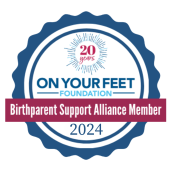Open Adoption vs Co-Parenting – Why They’re Not the Same

What Is Open Adoption?
What Is Co-Parenting?
Open Adoption vs Co-Parenting
- Legal Rights
At the heart of the open adoption vs co-parenting conversation is the matter of legal rights.
In open adoption, once the adoption is finalized, all legal rights and responsibilities for the child shift entirely to the adoptive parents. That means everything from healthcare decisions to school enrollments to passports, is handled by the adoptive family. The birth parents may remain emotionally present, but they no longer have the legal right to make decisions about the child’s care.
Co-parenting, on the other hand, requires shared legal rights. Both parents are involved in decision-making. If one parent wants to move, enroll the child in a new school, or change a medical plan, they typically must consult with the other. Legal arrangements vary by state, but the principle remains: co-parents work together in parenting decisions, usually backed by a formal parenting plan or court agreement.
This legal divide makes the distinction between open adoption and co-parenting not just emotional, but foundational. When families mix up these definitions, it can lead to unrealistic expectations or strained relationships.
- Emotional Roles and Expectations
Emotionally, both arrangements can be supportive and healthy, but they ask different things from the adults involved.
In an open adoption, birth parents are encouraged to be a consistent and caring relationship, without the day-to-day pressures of parenting. It’s a meaningful role, often centered around shared family history, traditions, and connection. They might send birthday cards, attend milestone events, or chat with the child through video calls. Their presence reinforces identity and answers questions about heritage, background, and family history.
In co-parenting, emotional involvement runs parallel with active caregiving. The child might live part-time with each parent. Both parents are often involved in daily routines, bedtime stories, homework help, doctor visits, and weekend plans. Co-parenting is both emotional and logistical, with both adults expected to be active participants.
Again, in open adoption vs co-parenting, the expectations look different. Birth parents in open adoptions are not required to organize school lunches or attend parent-teacher conferences. Instead, they’re valued for who they are and the connection they offer, without the formal demands of shared parenting.
- Stability and Structure for the Child.
One of the biggest concerns we hear, especially from adoptive families, is about providing a sense of stability. It’s a valid concern, and understanding how each model affects the child helps.
Open adoption gives children a consistent home life with one set of parents making the rules and decisions. It offers structure with a layer of connection. When done well, children grow up knowing where they belong and also where they came from. The birth parents are not competing for authority, but they are another source of love, support, and connection for the child.
In co-parenting, the child may go between two homes and follow two sets of routines. While this can also be stable with good communication and respectful collaboration, it’s logistically more complex. Children benefit when both co-parents are aligned, but they also notice when conflicts arise.
- Consent, Control, and Boundaries.
Another important point in the open adoption vs co-parenting conversation is how consent and control show up in each relationship.
In open adoption, contact agreements are typically made voluntarily and built on mutual respect. The adoptive family invites communication from the birth family and, in many cases, lays out boundaries to protect the child’s sense of safety and routine. These boundaries might be discussed with a social worker or counselor. While the level of openness can change over time, it’s always rooted in the best interest of the child.
With co-parenting, both adults typically have equal say and must consent to major decisions. That can mean more frequent communication, more negotiation, and sometimes, more conflict. Parenting plans can help, but the need to constantly align on decisions is built into the structure.



